
For once, it was good news. Tesco had just unveiled its revamped Extra in Watford and press and public alike were smitten. But if you cast your mind back a little further, hypermarkets were being blamed for the death of the high street. And, as UK number one, Tesco was number one in the firing line.
As such, the reaction to its latest hypermarket represents quite some turnaround for Tesco on the PR front. So how does the indie sector feel about the fact that fixing the hypermarkets, for so long seen as the cause of all their troubles, is suddenly a cause of national angst? Will adding gyms, fun restaurants, quality coffee shops, nail bars and so on make things even worse for the high street? And what about new hypermarket developments? Are they as doomed as some suggest?
Local impact
Watford High Street is in good shape to withstand a revamped Extra. A host of family-style restaurants, including a Zizzi and a Wagamama, have recently opened and the high street is also packed with coffee shops and three bakers - including two branches of Greggs. As for the local butcher, G. Gibsons, asking about the revamp brings a resigned sigh. In terms of whether it would have an impact on trade, it’s too early for him to call. “Trade is always up and down during the Summer holidays, but we will see what effect it will have once it’s back to business as usual,” he shrugs.
The strange thing about the decline of the out-of-town hypermarkets is that it isn’t the independent sector that’s been running them down. It’s the supermarkets themselves. Morrisons CEO Dalton Philips wrote them off as “soulless sheds” last year. And, as he followed the lead of Tesco, Sainsbury’s and Asda in embracing convenience stores (and online), the end of the space race was called, and a consensus built around his contention that hypermarkets would be “remembered as a blip in retail history”. Politicians have also been doing their bit to put a stop to future hypermarkets. Strict new planning legislation (the NPPF) was rubberstamped by the government in March 2012. The language was unequivocal in its stance on out-of-town supermarkets, clearly stating any application likely to have a “significant adverse effect” on town centres “should be refused”. And then David Cameron appointed Mary Portas to save the high street.
It all added up to bad news for the likes of Tesco and good news for the little guys. Perhaps the high street did have a future, after all?
Cracks in the grand plan appeared when the Portas Review was largely ignored, descending into squabbling and chaos. But arguably the firmest indication that the death of the hypermarket had been greatly exaggerated came in June, when Tesco was granted planning permission by Eric Pickles, secretary of state for communities and local government, to open an 82,000 sq ft store on the seafront in Margate - ironically one of the towns earmarked for town centre regeneration and handed £100,000 as a Portas Pilot town.
Read this
Take the tour of Tesco’s overhauled hypermarket and model store in Watford
Portas was “devastated” by the Tesco Extra approval and warned it would have a “catastrophic” effect on Margate town centre. The decision flew in the face of everything the government had been publicly arguing for. And while she was able to crow about the recent rejection of a Tesco Extra in Sherborne, Dorset, it received precious little coverage versus the blanket publicity for Tesco’s reinvention of its under-fire hypermarkets as embodied, so skillfully, in Tesco Extra. A pack of journalists drooled their way around the Watford Extra before delivering fulsome praise in forensic detail. The BBC even sent a film crew down. Everyone agreed the food looked fabulous but it was the new additions that stole the show. Look, it has a Giraffe family restaurant! Ooh, isn’t the Harris + Hoole coffee shop lovely? How wonderful the new dedicated F&F clothing area looks! Wow, that artisan-style Euphorium Bakery looks sensational. Hasn’t Tesco done well?
Tesco will have enjoyed the hyperbole. Especially considering it has just shuffled up the layout, nicked a few fresh features from Morrisons, plonked down a colourful Giraffe restaurant and given the place a spit and polish. But although it’s nicer than it was, says retail expert Clare Rayner, it remains a Tesco Extra on an out-of-town shopping park.
“They have created an enormous amount of positive PR for the brand, but I find the reaction strangely incongruent in the face of everything that is being discussed in terms of out-of-town developments,” she says. “One minute these out-of-town stores are the root of all evil but then suddenly we get a really posh one and it’s become flavour of the month.”
Read this: Tesco’s vision of big-scale retailing takes shape in Watford
ACS CEO James Lowman offers up a similar assessment of the public image turnaround, although he is quick to recognise Tesco has done a good job with the revamp. “In terms of how they have executed it, the reviews are good, so well done,” he says. “I am not challenging the business logic of what they are doing. Given the situation they are in, with so much space to fill, it makes sense.”
However, he hasn’t been blinded by the light either. Tesco may have found a possible solution to its excess space (and Tesco itself is very clear the jury is still out), but Lowman argues that “what Tesco is doing, by introducing developed, branded offers around restaurants and gyms, is literally dragging the high street out of town. It is hijacking the high street’s point of difference.”
From grotty to glamorous
Which, according to Rayner, is exactly the plan. “Tesco has always had a very strong presence in food but as the market has become more consolidated, the desire to grab category share in non-food has become ever more acute. The natural evolution for Tesco is to acquire brands like Giraffe then integrate and embed them as part of the customer experience as opposed to a boring supermarket café. What they have been able to do is redevelop a grotty supermarket into a glamorous template for the future and make the store itself a place that is pleasant to spend time in. It’s all about keeping customers within the four walls of Tesco.”
It follows that it’s all about keeping them off the high street. Where it was once the sole preserve of the local butcher, baker, greengrocer or c-store to get jittery about a giant supermarket opening nearby, this time around the whole high street should be worried, Lowman argues.
“One minute these stores are the root of all evil but suddenly we get a posh one and it’s flavour of the month”
Clare Rayner
“If we are so concerned about high streets, what are the implications for them now that supermarkets are trying to replicate a full offer? The out-of-town development successive governments allowed to happen is coming home to roost because Tesco is taking on the high street in its entirety, and the other supermarkets will soon do similar things. There is a surplus of out-of-town space they need to fill and based on what we are seeing from Tesco, that will be to provide more of a general retailer and leisure offer. And that will be more of a direct threat to the high street than ever before.”
Our barometer shows indies are concerned by the revamp, with 57% saying the resurgence of the hypermarket is a “bad thing” for the high street.
Video: Tesco Watford video: Harris + Hoole boss tours new-look site
Plus, Tesco is also still growing its Extra estate, says Lowman. Although Watford, Coventry and Purley are redevelopments (and thus not covered by the new planning legislation), applications are still going through that are “against the spirit and letter” of the town-centre-first policy in the NPPF. “We see very well run developer campaigns and we see local authorities swayed by section 106 agreements or a potential increase in rates income,” he says.
“That direct financial benefit is seductive. We recognise jobs and growth is the mantra, and we agree with that to some extent, but that shouldn’t mean giving the green light to anything that might give someone a job. There are some very bad decisions being made.”
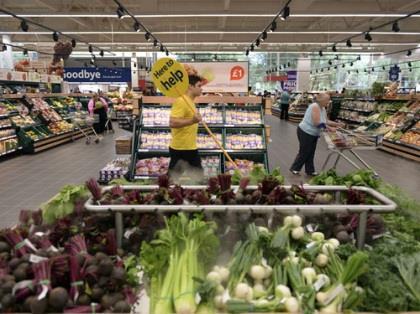
A spokeswoman for Tesco declined to address specific concerns of the indie sector over its strategy for its Extras. However, she did confirm that, although it was “very early days” for the Watford concept, the “initial signs in terms of customer feedback are very encouraging”.
If that positive reaction continues, Tesco will have established a successful blueprint for a Destination Store 2.0.
Whether they are revamps or brand new builds, they will be hypermarkets that people actually want to hang around in. And even if they don’t build many more, there is still plenty of space for Tesco to fill.







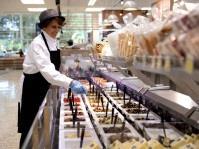
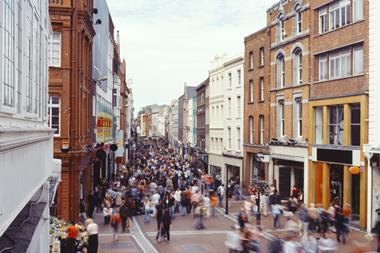

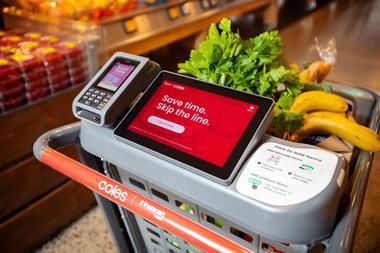

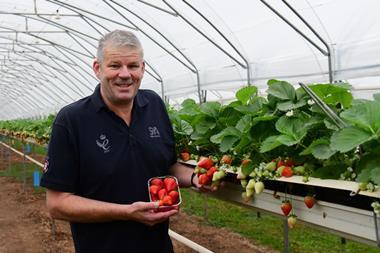






No comments yet